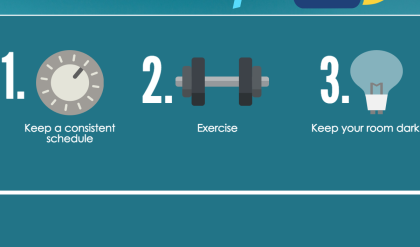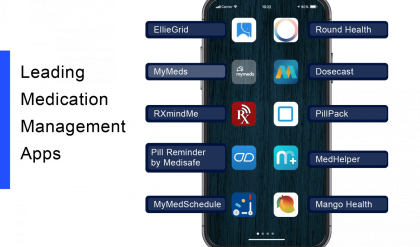
Fuel Your Body Right: The Ultimate Guide to Healthy Eating on a Budget
Eating healthy shouldn’t break the bank. This comprehensive guide dismantles the myth that nutritious food is a luxury, proving that vibrant well-being is achievable even on a tight budget. We’ll explore practical strategies, delicious recipes, and money-saving tips to help you nourish your body without emptying your wallet.
Part 1: Mindset Shift – Reframing Your Relationship with Food
Before diving into specific meals and menus, let’s address the mental game. Healthy eating isn’t about deprivation; it’s about mindful nourishment. Shifting your perspective from restrictive dieting to conscious consumption is crucial for long-term success.
- Embrace Imperfection: Don’t aim for unattainable perfection. A single unhealthy meal won’t derail your progress. Focus on making healthy choices most of the time.
- Plan Your Meals: This single action drastically reduces impulsive, unhealthy purchases. Knowing what you’ll eat prevents last-minute fast-food runs.
- Celebrate Small Victories: Acknowledge and appreciate your progress. Every healthy meal is a step towards a healthier you.
Part 2: The Power of Planning – Budgeting and Shopping Strategies
Strategic planning is the cornerstone of budget-friendly healthy eating.
- Create a Weekly Meal Plan: Based on your budget and available ingredients, plan your meals for the entire week. This minimizes waste and spontaneous spending.
- Master the Art of the Grocery List: Stick to your list religiously. Avoid impulse buys by pre-planning your shopping trip.
- Shop Seasonally: Seasonal produce is significantly cheaper and often tastier. Embrace the bounty of each season.
- Embrace Frozen Foods: Frozen fruits and vegetables are just as nutritious as fresh and often more affordable.
- Become a Bulk Buying Pro: For staples like rice, beans, and oats, buying in bulk significantly reduces the per-unit cost. Consider splitting bulk purchases with friends or family.
- Utilize Leftovers Creatively: Turn yesterday’s dinner into today’s lunch. Get creative with repurposing leftovers to avoid food waste.
Part 3: Budget-Friendly, Nutrient-Rich Foods
Here’s a list of affordable powerhouse ingredients:
| Food Group | Example Foods | Benefits | Budget-Friendly Tip |
|---|---|---|---|
| Legumes | Beans, lentils, chickpeas | High in protein and fiber | Buy dried beans and lentils; they’re cheaper |
| Grains | Brown rice, oats, quinoa | Complex carbohydrates, fiber | Buy in bulk |
| Vegetables | Leafy greens, root vegetables | Vitamins, minerals, fiber | Buy seasonal produce; freeze excess |
| Fruits | Bananas, apples, oranges | Vitamins, minerals, antioxidants | Buy in season; consider frozen options |
| Protein Sources | Eggs, canned tuna, chicken thighs | Essential for muscle building and repair | Buy in bulk or when on sale |
Part 4: Delicious and Affordable Recipes
Here are a few recipe ideas to get you started:
- One-Pot Lentil Soup: Hearty, filling, and packed with nutrients. Uses inexpensive lentils, vegetables, and broth.
- Black Bean Burgers: A delicious and affordable vegetarian option. Uses canned black beans, breadcrumbs, and spices.
- Overnight Oats: A quick and easy breakfast option. Combine oats, milk (dairy or non-dairy), and your favorite toppings.
- Sheet Pan Chicken and Veggies: A simple and healthy dinner option that minimizes cleanup.
Part 5: Beyond the Plate – Lifestyle Choices
Healthy eating is intertwined with other lifestyle factors:
- Hydration is Key: Drink plenty of water throughout the day. Water is free and essential for optimal health.
- Prioritize Sleep: Adequate sleep supports metabolic function and overall well-being.
- Move Your Body: Regular physical activity boosts metabolism and improves mood. Many free or low-cost options are available, like walking or jogging.
Conclusion:
Eating healthy on a budget is achievable with mindful planning, smart shopping strategies, and a focus on nutrient-rich, affordable foods. Embrace this journey, celebrate small victories, and enjoy the rewarding benefits of fueling your body right, without breaking the bank.

Additional Information
Fuel Your Body Right: A Deeper Dive into Budget-Friendly Healthy Eating
The core message of “Fuel Your Body Right: The Ultimate Guide to Healthy Eating on a Budget” – that nutritious food doesn’t have to be expensive – is crucial, but requires nuanced understanding to be truly effective. This analysis delves deeper into the challenges and strategies presented, offering practical advice and analytical insights to maximize the guide’s impact.
Challenge 1: The “Health Halo” Effect and Hidden Costs: The guide likely addresses the allure of processed “health foods,” which often carry a premium price despite limited nutritional benefit. Understanding this “health halo” effect is vital. For example, pre-packaged “protein bars” or “energy drinks” marketed toward health-conscious consumers can be significantly more expensive than preparing a homemade equivalent using whole grains, lean protein (like beans or lentils), and fruits. A comparative analysis of the cost-per-serving and nutritional profile of these items would greatly enhance the guide’s value. This could involve creating a table comparing readily available processed options to their budget-friendly homemade alternatives, showcasing the substantial cost savings and potentially superior nutritional content.
Challenge 2: Geographic and Socioeconomic Disparities: Access to affordable, healthy food varies drastically based on location and socioeconomic factors. The guide must explicitly acknowledge this disparity. Food deserts, areas lacking access to supermarkets with fresh produce, disproportionately affect low-income communities. The guide should include strategies to overcome this challenge:
- Community-supported agriculture (CSA) programs: These offer a share of a farm’s produce at a reduced cost, potentially improving access to fresh fruits and vegetables. Examples of successful CSA models and their impact on food security could be included.
- Farmers’ markets and local sourcing: While not always cheaper, these options often provide higher quality produce at competitive prices, especially during peak seasons. Analyzing the cost-effectiveness of this approach in different geographic contexts would add value.
- Utilizing food banks and pantries: While not a long-term solution, this option provides immediate relief for those facing food insecurity. The guide could include resources and information on accessing these services responsibly.
Challenge 3: Time Constraints and Meal Planning: Healthy eating requires planning and preparation, but time is a scarce resource for many. The guide should offer practical meal-planning strategies:
- Batch cooking: Preparing large quantities of staple foods (grains, beans, soups) on the weekend can significantly reduce cooking time during the week. Case studies illustrating the time savings and cost benefits of batch cooking would strengthen the argument.
- Utilizing freezer space: Freezing leftovers or prepared meals ensures minimal food waste and quick meal options on busy days. The guide could provide examples of freezer-friendly meals and best practices for food storage.
- Simple recipes: Focus on recipes with minimal ingredients and steps. Providing a section with quick, easy, and budget-friendly recipes tailored to different dietary needs (vegetarian, vegan, etc.) would be extremely beneficial.
Challenge 4: Waste Reduction: Food waste contributes significantly to household expenses. The guide should emphasize strategies to minimize food waste:
- Proper food storage techniques: Understanding how to store different food types optimally can extend their shelf life.
- Creative recipe adaptations: Utilizing leftover ingredients in new meals minimizes waste and promotes culinary creativity. Examples and recipes could be included.
- Composting: Composting food scraps reduces landfill waste and can produce valuable compost for gardening.
Conclusion: By addressing these challenges and incorporating detailed examples, comparative analyses, and practical strategies, “Fuel Your Body Right” can evolve from a general guide to a truly impactful resource, empowering individuals to achieve healthy eating habits on a budget regardless of their circumstances. The inclusion of quantifiable data (e.g., cost comparisons, nutritional information) would further enhance its credibility and practicality. Finally, providing links to relevant resources and support organizations would ensure the guide’s long-term effectiveness.






